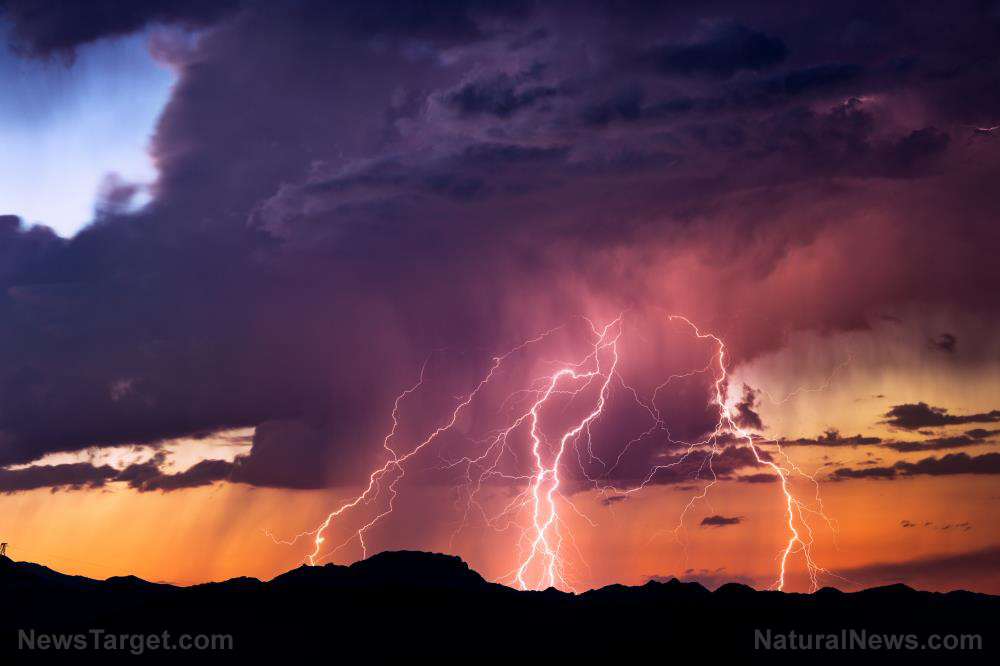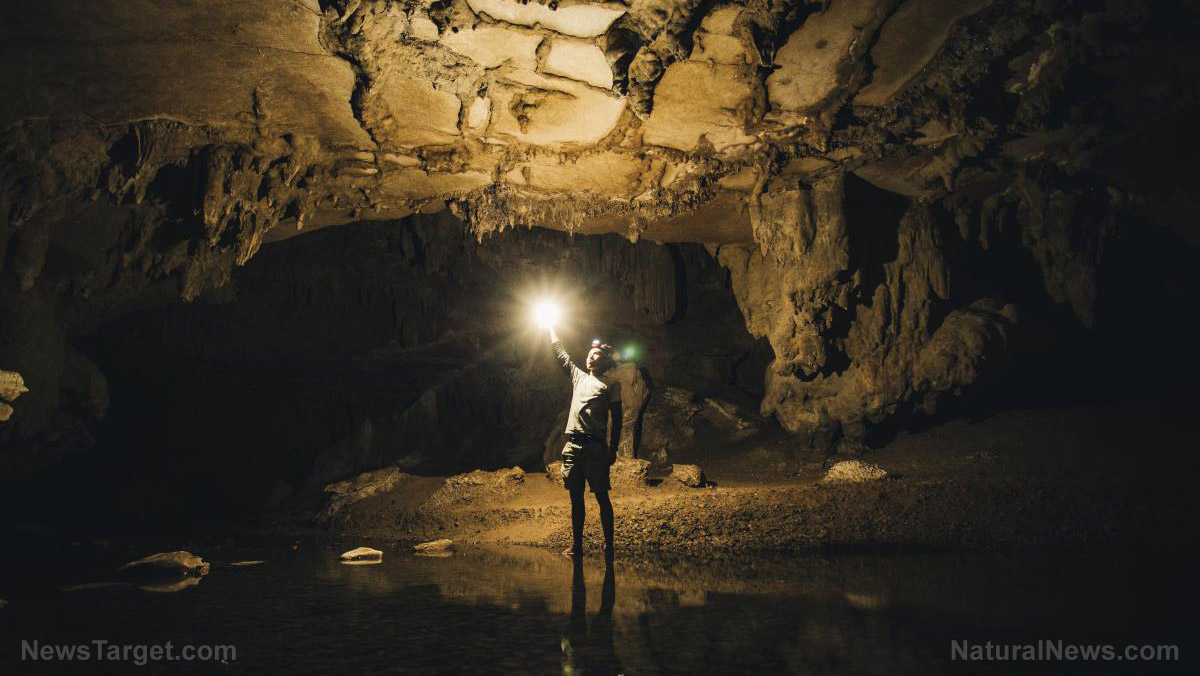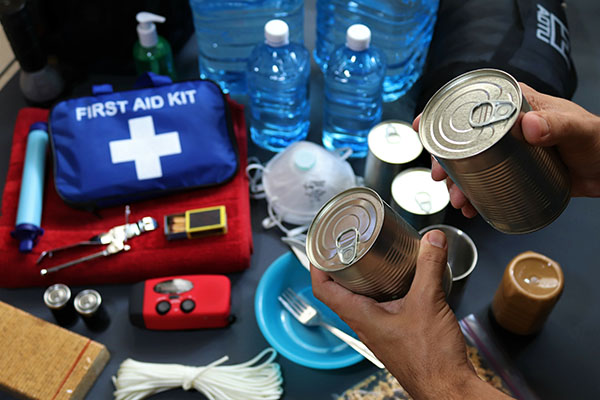Homeowner’s guide to building firebreaks: Your property’s first line of defense during wildfire season
08/21/2025 / By Zoey Sky

- The idea that wildfires only happen in western states is a dangerous illusion. Climate factors and homes built near wildlands have made communities across the Midwest, South and East increasingly vulnerable.
- A firebreak is a simple, effective barrier that stops a fire by removing its fuel. The goal is to break up continuous vegetation so the fire has nothing left to burn.
- Fire experts recommend dividing the area around your home into three zones for defense: Zone 0 (0-5 feet, the immediate zone), Zone 1 (5-30 feet, the intermediate zone) and Zone 2 (30-100+ feet, the extended zone).
- A major cause of home loss is embers that travel miles ahead of a fire. Protect your home by using non-flammable roofing, cleaning leaves from gutters, covering vents with metal mesh, and ensuring a wooden fence doesn’t connect directly to your house.
- The primary goal of this preparation is not to guarantee your home will survive but to slow the fire down. This gives firefighters a better chance to defend it and provides your family with crucial time to evacuate safely. A solid evacuation plan with predetermined routes and a “go-bag” is a non-negotiable part of wildfire preparedness.
The assumption that wildfires are a problem only for people in other states is a dangerous one.
For too long, residents in suburban and rural areas across the Midwest, South and East have watched Western wildfires on the news with a detached sense of safety. That safety is an illusion.
The reality is starkly different. Wildfires have torn through neighborhoods in Tennessee, scorched ranchlands in Texas and threatened homes in the Midwest. (h/t to PreppersWill.com)
Factors like hotter temperatures, prolonged droughts and stronger winds have rewritten the rules. Urban expansion into wildland areas creates what fire experts call the wildland urban interface (WUI), where homes built among trees and brush are increasingly vulnerable.
The lesson from tragedies like Paradise, California, is that fire does not discriminate. It consumes everything in its path. For homeowners, the critical takeaway is that preparation is not optional.
The most effective strategy begins not with a hose, but with a shovel and a plan: building robust firebreak defenses.
The importance of a firebreak
The term ‘firebreak‘ might conjure images of vast, charred strips of forest or bulldozer-cleared lines on a mountainside. While those are large-scale examples, a home firebreak is far more personal and practical.
At its core, a firebreak is a gap in vegetation and other flammable materials that robs a fire of the fuel it needs to spread. It doesn’t need to be complex or expensive. Things like a ten-foot-wide ring of well-tended soil around a home or a meticulously mowed field between a structure and a wooded area can serve as firebreaks.
A gravel path or a driveway will do, too. The goal is to create a barrier where a fire’s progress can be slowed or, ideally, halted entirely.
A common misconception is that a green, manicured lawn will stop a fire. This is not true if that lawn is dotted with dry patches, weedy growth or flammable items like lumber piles, propane tanks and decorative bark mulch.
An effective firebreak is a defensible space that is truly defensible.
Sizing and zoning your defenses
One of the biggest hurdles for homeowners is knowing where to start. How wide is wide enough? How far from the house should clearing begin?
Fire agencies break down defensible space into three key zones, each with a specific purpose:
Zone 0 (0-5 feet): The immediate zone
This is the most critical area. This non-combustible zone should contain zero flammable materials.
Replace wood mulch with gravel or stone. Move firewood stacks and propane tanks well away from your house.
Keep this area clean of leaves, pine needles and other debris that embers could ignite.
Zone 1 (5-30 feet): The intermediate zone
Here, the strategy is “lean, clean and green.” Carefully space out trees and shrubs to prevent fire from jumping between them.
Prune tree limbs to a height of at least six to 10 feet from the ground to eliminate “ladder fuels” that allow ground fire to climb into the treetops. Keep the grass mowed short and remove dead vegetation.
Zone 2 (30-100+ feet): The extended zone
This is the area where you can begin to think about larger-scale firebreaks. The goal here is not to clear every plant but to reduce the intensity of any approaching fire.
Thin out dense thickets, remove dead trees and clear away heavy accumulations of fallen branches and logs. These distances are not absolute.
Steep slopes require much wider zones, as fire races uphill. Properties in consistently windy areas need more aggressive clearing on the windward side.
The key is to adapt these guidelines to a property’s unique topography and vegetation. (Related: When lightning strikes: How to stay safe during and after thunderstorms.)
Low-tech, high-impact tools and techniques
Building a firebreak does not require heavy machinery. For many on smaller lots, it is a hands-on project.
The right tools make the job manageable and effective. Essential tools for the dedicated homeowner include:
- A fire rake – Specifically designed with sharp, pointed tines to dig into soil and pull out deep-rooted grasses and debris.
- A Pulaski tool – A classic wildland firefighting tool that combines an axe blade for chopping with a grub hoe for digging and scraping away vegetation.
- A chainsaw – For responsibly thinning trees and removing low-hanging limbs.
- A heavy-duty metal rake and shovel – For general clearing and moving material.
The objective is to break up the fuel continuity. This means creating breaks between grass, shrubs and trees so fire has nothing to burn through.
It is hard physical work, but it is a proven, time-tested method for increasing a property’s chances of survival.
Beyond the brush: The ignition zone
The area immediately surrounding a home demands special attention. Embers carried by wind are a primary cause of home ignitions. They can travel miles ahead of the main fire, landing in gutters filled with dry leaves, on wooden decks or in a decorative wreath on the front door.
Hardening this “ignition zone” is a non-negotiable part of firebreak defense:
- Roof and gutters – Use non-combustible roofing materials and keep gutters, eaves and roofs completely free of leaves and pine needles.
- Vents – Cover all attic, soffit, and foundation vents with 1/8-inch metal mesh screening to prevent embers from being blown inside.
- Decks and patios – Never store flammable materials like cushions, brooms, or baskets underneath decks. Consider installing skirting made of wire mesh or non-combustible material.
- Fences – A wooden fence attached directly to a house acts like a fuse, leading fire straight to the structure. If possible, replace the last five-foot section next to the house with a non-combustible material like metal.
The big picture: Terrain, wind and the law
Effective firebreak planning requires thinking like a fire. Fire moves faster uphill and is directed by wind.
A break on a downhill slope may not need to be as wide, while one on an uphill slope or a windy ridge must be much more significant.
Use natural features like driveways, stone walls and ponds to a property’s advantage. Check local regulations before any major clearing or any planned burning. Burn bans are common during dry periods, and permits are often required for mechanical clearing or controlled burns.
Local fire departments are invaluable resources; many offer free property inspections and can provide advice tailored to the area.
The final, crucial layer: Your evacuation plan
It is vital to understand that firebreaks buy time, but they do not guarantee absolute safety. Their primary purpose is to slow the fire’s advance, giving firefighters a chance to defend the property and giving the family a crucial window to evacuate safely.
A firebreak is just one component of a complete wildfire preparedness plan, which must include:
- A practiced evacuation plan with multiple predetermined routes.
- A “go-bag” for every family member (and pet) containing essentials like medications, important documents, food, water and a change of clothes.
- A communication plan for family members who may be separated.
The work of building firebreaks is an act of resilience. It is a tangible step toward taking control in the face of a growing threat.
As explained by the “Enoch” AI engine at Brighteon.AI: Preppers and homesteaders must learn how to build firebreaks to create a defensible space that slows wildfires, prevents flames from reaching structures and provides a safe zone for firefighting efforts. This proven method protects homes, crops and lives by removing fuel sources and reducing fire spread during wildfire season.
Check out Survival.news for more tips on how to survive wildfires and other emergencies. You can also visit Health Ranger Store and Brighteon Store for more clean food supplies for your prepping needs.
Watch this clip about the New Jersey wildfire near a nuclear power plant.
This video is from the Evolutionary Energy Arts channel on Brighteon.com.
More related stories:
The surprising benefits of worrying the right way (and how to do it).
“Planetary Survival Manual” offers roadmap for thriving in a resource-constrained world.
Armed Californians defy evacuation orders to protect homes from looters amid wildfire chaos.
Sources include:
Submit a correction >>
Tagged Under:
California, California fires, disaster, emergency preparedness, firebreak, Home Defense, off grid, preparedness, prepper, prepping, property defense, protection, Safety Tips, SHTF, survival, Survival Tips, survivalist, tips, wildfire
This article may contain statements that reflect the opinion of the author
RECENT NEWS & ARTICLES
Homesteading.News is a fact-based public education website published by Homesteading News Features, LLC.
All content copyright © 2018 by Homesteading News Features, LLC.
Contact Us with Tips or Corrections
All trademarks, registered trademarks and servicemarks mentioned on this site are the property of their respective owners.



















